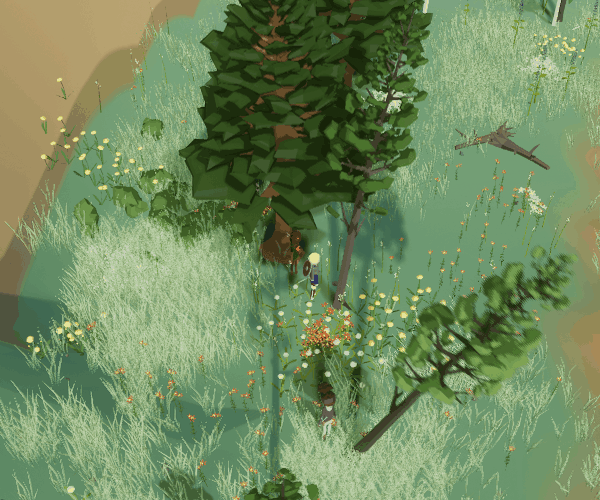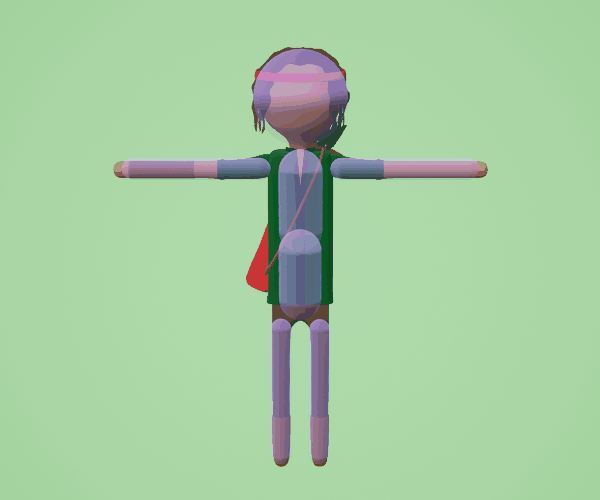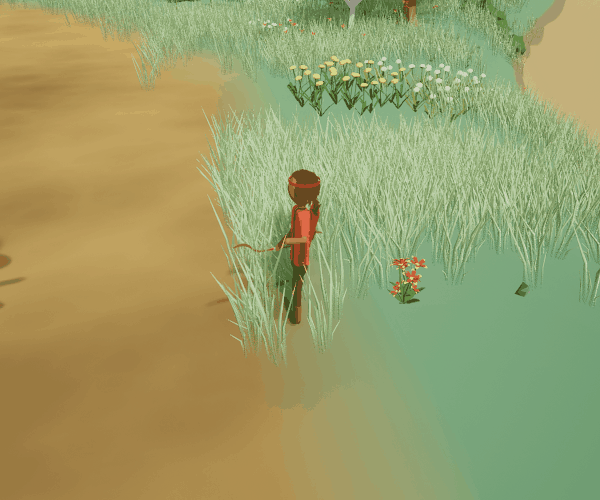Cats Do Not Abide By The Laws Of Nature
March 9th, 2023
Here’s a quick post about some uses of physics in our game and how we ensure the game remains performant.
Loose Wood
When a tree is chopped down for lumber it splits into carryable logs upon contact with the ground. The number of logs spawned is derived by taking the height of the chopped tree and dividing it up into constant sized logs. The logs spawned also have their material set so that it matches the tree that spawned them.
To add some flavor, we add a small upward impulse to each log. This gives the logs a satisfying pop into the air. Afterwards, gravity takes over and logs will settle into place. Early on in developing the log chopping and gathering mechanic, we noticed that the game’s frame rate would plummet if enough logs were active on the screen. The log physics are computed on the player’s CPU, so these computations would eventually slow down the game thread and aren’t something that can be easily tuned per the player’s computer.

Popping logs in action
To counter this potential performance hit, we give the logs 10 seconds to settle into place once spawned. After the 10 seconds have passed, their physics is disabled and their performance cost is reduced to a negligible amount. We use this mechanic for all items that can be picked up and carried by units. Once an item is picked up, we disable physics (if it isn’t already disabled). If the item gets dropped before delivery to the caravan, we enable physics again for 10 seconds.
Getting Knocked Around
Physics plays a role in combat as well. Not only do arrows and grenades use physics to reach their target, thus making them dodgeable, but the units have special skills that can send their foe flying.
Unit collisions are usually performed with a single capsule collision shape that encloses the unit’s skeletal mesh. By using a shape simpler than the skeletal mesh itself, the collision computations are simplified; instead of using the physics primitives composing the skeletal mesh collidable areas, we compute collisions with other units and things using the capsule shape, which results in sizable performance gains.

Ragdoll using the physics primitives composing the skeletal mesh
When a unit is hit with a knockback attack, a number of processes will occur to the components of the unit:
- Disable animations for the skeletal mesh
- Disable collisions for the capsule shape
- Enable collisions for the skeletal mesh
- Enable physics simulation for the skeletal mesh (using the physics primitives for collisions instead of the capsule shape)
- Enable gravity for the skeletal mesh
- Detach the skeletal mesh from the root component of the unit (the root component being the capsule shape)
With all of these steps completed, the unit is free to ragdoll through the air, bringing joy to all who see it. Since the capsule shape is a unit’s root component, it is what other units will use to compute the ragdolled unit’s position. Therefore, during the ragdolling we must also ensure that the capsule shape’s position in the world is continually updated to match the now ragdolled skeletal mesh.

Archer begone!
If the ragdolled unit has been defeated, it will remain in its limp state for 5 seconds. After the 5 seconds of settling, physics will be disabled and the unit will be considered dead to all others. If the unit has not been defeated and will continue to fight, we must complete a series of steps to get it back on its feet:
- Disable collisions for the skeletal mesh
- Disable gravity for the skeletal mesh
- Set the capsule shape to the skeletal mesh’s position
- Enable collisions for the capsule shape (using this for collisions instead of the physics primitives)
- Reattach the skeletal mesh to the capsule shape
- Set the capsule shape’s position to encompass the skeletal mesh
- Enable animations for the skeletal mesh
This process took a fair amount of trial and error to get working properly, but after some work we can finally enjoy satisfying kicks to the chest.